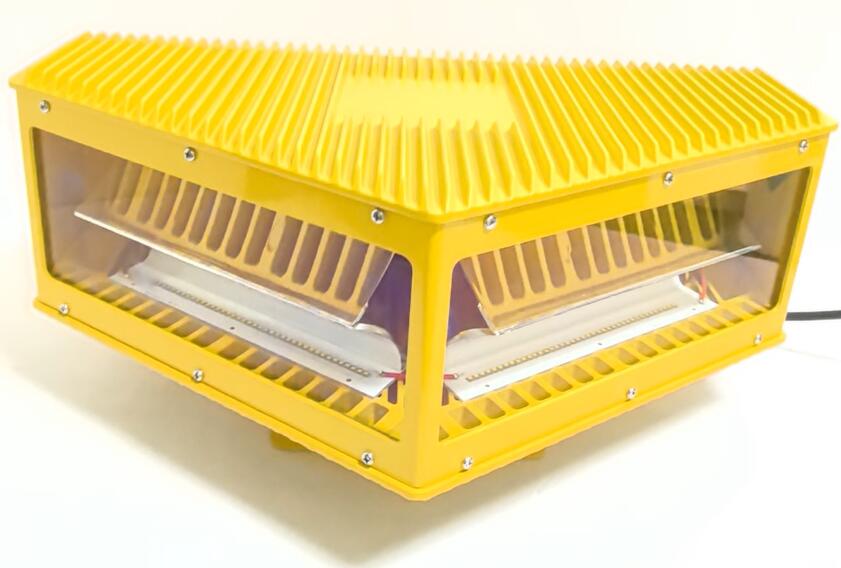| ICAO LED Lighting Systems |
The aviation industry's transition to LED technology has marked a significant leap forward in obstacle lighting systems. ICAO LED standards have become the global benchmark for efficient, reliable, and sustainable aviation warning lights. These advanced lighting solutions not only meet stringent international safety requirements but also offer superior performance compared to traditional lighting technologies. This article explores the critical role of ICAO LED systems in modern aviation, examining their advantages, applications, and future developments in air navigation safety.
The Importance of ICAO-Compliant LED Lighting
The International Civil Aviation Organization (ICAO) establishes universal standards for aviation safety, including specifications for obstacle lighting. ICAO LED systems have become the preferred choice due to their:
Enhanced visibility in all weather conditions
Energy efficiency reducing operational costs
Longer lifespan minimizing maintenance requirements

Environmental sustainability with lower carbon footprint
These characteristics make LED technology ideal for critical aviation applications where reliability is paramount.
Key Applications of ICAO LED Lighting
1. Obstacle Lighting for Tall Structures
ICAO LED systems are mandatory for:
Communication towers
Wind turbines
Skyscrapers
Industrial chimneys
Bridge supports
These installations prevent collisions by marking potential hazards to air navigation.
2. Airport Perimeter and Runway Lighting
Modern airports increasingly adopt ICAO LED solutions for:
Runway edge lights
Taxiway guidance systems
Approach lighting arrays
Visual glideslope indicators
3. Helicopter Landing Zone Marking
Helipads and hospital landing zones utilize specialized ICAO LED configurations to ensure safe operations during night and low-visibility conditions.
Technical Specifications of ICAO LED Systems
ICAO Annex 14 Volume I provides detailed technical requirements for LED aviation lighting:
Light intensity classifications (low, medium, high)
Color specifications (red, white, or dual-color systems)
Flash patterns and synchronization requirements
Photometric performance under various weather conditions
Electrical and mechanical durability standards
Modern ICAO LED systems incorporate smart features like automatic intensity adjustment based on ambient light conditions.
Advantages Over Traditional Lighting Technologies
ICAO LED systems outperform conventional lighting in multiple aspects:
Energy Efficiency
Consumes up to 80% less power than incandescent systems
Reduced electrical infrastructure requirements
Operational Reliability
50,000+ hour lifespan versus 1,000-2,000 hours for traditional bulbs
Resistant to vibration and extreme temperatures
Maintenance Benefits
Fewer replacements needed
Modular designs simplify repairs
Environmental Impact
Lower energy consumption
No hazardous materials (unlike some discharge lamps)
Implementation Challenges and Solutions
While ICAO LED systems offer numerous benefits, implementation presents certain challenges:
Retrofitting Existing Infrastructure
Solution: Modular LED units designed for easy replacement of older fixtures
Harmonization with Legacy Systems
Solution: Hybrid configurations allowing gradual transition
Extreme Environment Performance
Solution: Advanced thermal management and ruggedized designs
Regulatory Compliance Verification
Solution: Third-party certification and standardized testing protocols
Future Trends in ICAO LED Technology
The evolution of ICAO LED systems continues with emerging innovations:
Smart Lighting Networks
IoT-enabled systems with remote monitoring and control
Predictive maintenance capabilities
Advanced Materials
Nanotechnology-enhanced LEDs for greater efficiency
Self-cleaning optical surfaces
Sustainable Solutions
Solar-powered LED arrays
Energy harvesting technologies
Enhanced Visibility Systems
Adaptive intensity control
Integrated radar reflectivity
Global Adoption and Case Studies
Several nations have successfully implemented large-scale ICAO LED projects:
European Air Navigation Safety Plan
Continent-wide transition to LED obstacle lighting
Standardized implementation across EU member states
Middle East Megaprojects
LED systems for ultra-tall structures in Dubai and Riyadh
Special desert-environment adaptations
Asia-Pacific Aviation Growth
Rapid deployment supporting airport expansions
Typhoon-resistant designs for coastal areas
ICAO LED lighting systems represent the gold standard in aviation safety illumination, combining superior performance with sustainability benefits. As global air traffic continues to grow, these advanced lighting solutions will play an increasingly vital role in preventing accidents and ensuring efficient airspace utilization. The ongoing technological evolution promises even greater capabilities, from intelligent networked systems to eco-friendly designs. By adhering to ICAO standards while embracing innovation, the aviation industry can look forward to safer, more reliable, and more sustainable obstacle lighting solutions for decades to come. The widespread adoption of ICAO LED technology underscores its critical importance in modern aviation infrastructure worldwide.